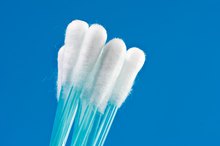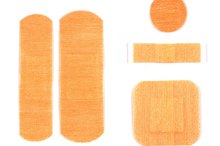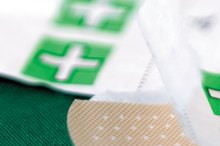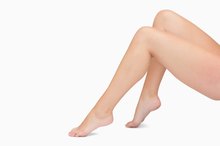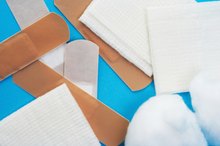How to Use a Tegaderm
Tegaderm is a dressing material manufactured by 3M 13. It can be used to cover surgical wounds, minor burns and injuries, IV sites and central lines. Tegaderm dressings provide a waterproof barrier, yet they still allow oxygen to penetrate for better wound healing and skin health 1. Tegaderm is available in many sizes and may also be cut for a customized fit 1.
Cleanse the wound thoroughly with a product such as rubbing alcohol, betadine or chlorhexidine. Use disposable cotton swabs, preferably sterile. Saturate the swab with the cleaning solution and start in the center of the wound, working outward in a circular manner to prevent recontamination. Depending on the type of wound, a physician may recommend a different method of cleaning. Always follow physician recommendations for wound care.
How to Improve the Rate of Healing of the Skin
Learn More
Allow the wound to air dry completely after cleansing. Do not blow on the wound to speed the drying process, as it will introduce bacteria from the mouth into the wound, which could cause an infection. The wound must be completely dry for the Tegaderm to stick 1.
Determine how much Tegaderm you'll need to adequately cover the wound 1. Choosing a piece too small will prevent the dressing from adhering properly. A piece that's too large will increase pain when the dressing is removed because of the surface area it covers. The manufacturer recommends leaving 4 to 5 cm around borders of the wound for proper adhesion. Cut the Tegaderm to fit if necessary 1.
How to Remove Tegaderm Bandages
Learn More
Remove the paper backing from the Tegaderm piece to expose the adhesive side 1. A paper frame will remain around the edges of the Tegaderm, allowing for easier holding and application to the wound site 1. Do not remove this frame until after the Tegaderm is applied to the wound 1.
Place the Tegaderm piece over the wound site, with the wound in the center 1. Press gently to ensure that the Tegaderm sticks well 1. Smooth out any bubbles or creases.
Remove the paper frame that surrounds the Tegaderm by gently peeling one end and following it all the way around the dressing 13. Smooth down the edges as the frame is removed to adhere the dressing to the skin.
Tips
Always wash hands thoroughly before beginning any dressing change, and dry with a disposable paper towel.
Replace the Tegaderm dressing at least once every seven days.
Warnings
Tegaderm should not be used on infected wounds.
While the adhesive is considered hypoallergenic, some patients may develop sensitivity to the product, especially with repeated use. If redness or irritation occurs underneath the bandage, the Tegaderm piece should be removed and another type of dressing applied.
Related Articles
References
Writer Bio
Amber Canaan has a medical background as a registered nurse in labor and delivery and pediatric oncology. She began her writing career in 2005, focusing on pregnancy and health. Canaan has a degree in science from the Cabarrus College of Health Sciences and owns her own wellness consulting business.

